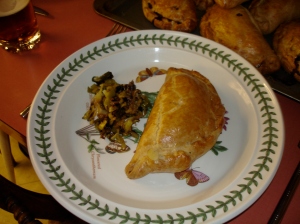Slow cooked Gloucester Old Spot Belly of Pork and Pork Fillet, pea croquette with a black pudding crumb, pea rillette, sour apple coulis and pea salt.
Recipe by: Aaron Janes, Head Chef, Silks Bistro & Champagne Bar, Atlantic Hotel, Newquay.
Aaron lives, breaths and dreams food, such is his passion for Silks restaurant that he helped to create back in 2004. His desire is to bring cooking in Cornwall, well and truly into the 21st century by creating classic British dishes with the very best Cornish ingredients.
“I like using only two simple ingredients and do something spectacular with them,” he explains. “As with the pea and pork – cooked in a variety of different ways with the added the element of delight and surprise so that people say, gosh that really tastes of peas!”
“The Gloucester Old Spot for this dish come from Ballardsfield Farm (practically next door to where I live), It’s great to see exactly where and how the pigs are raised. That’s the fantastic thing about Cornwall, sea and farmland is so close by and variety of produce is abundant and when there’s a glut of top quality something in season, I believe it’s best to grab it when you can!”
“The dish is really not as complicated to create as it sounds. Every stage is really very simple. There are no complicated techniques, it’s just planning and having all the elements ready to use in advance,” Aaron reassures. “Using a water bath ensures that the meat is kept tender, full of flavour and melts in the mouth when you eat it. Having the meat perfectly cooked beforehand means it is instantly ready to be given the last stage of the cooking to order.” Continue reading















